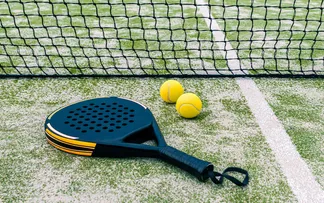

The Structure of Padel Courts in China A Growing Trend
Padel, a racquet sport that blends elements of tennis and squash, has been rapidly gaining popularity in China over the past few years. While the game itself is relatively new to the country, the infrastructure surrounding it, particularly the design and structure of padel courts, is evolving to meet the increasing enthusiasm of players. This article explores the essential elements and considerations involved in constructing padel courts in China, contributing to the sport's burgeoning growth.
Design and Dimensions
A standard padel court measures 20 meters in length and 10 meters in width, making it smaller than a tennis court but allowing for fast-paced gameplay. The court is enclosed by glass walls and metallic mesh, which play a pivotal role in the dynamics of the game, as players can use these surfaces to bounce the ball back into play. The height of the walls varies, typically reaching up to 4 meters at the ends and 3 meters high on the sides, accommodating both beginners and experienced players alike.
In terms of flooring, the selection of surface material is critical for player safety and performance. Common choices include artificial grass, which offers good traction and comfort, and synthetic materials that provide excellent durability. When constructing courts, it's essential to ensure that the surface has appropriate cushioning to reduce the risk of injuries.
Construction Materials
Building padel courts requires careful selection of materials to ensure longevity and optimal playing conditions. The frame of the court is usually made of galvanized steel, which withstands different weather conditions while ensuring structural integrity. The glass walls are typically made of tempered glass, providing both visibility and safety; they should be thick enough to endure high-impact play without shattering.
Additionally, the design should consider local weather conditions. For instance, in regions of China where temperatures can sharply fluctuate, using materials that can withstand these changes while maintaining the integrity of the court is crucial. Moreover, incorporating drainage systems into the design can help prevent water accumulation on the court, especially in areas prone to heavy rainfall.

Regulations and Compliance
As padel's popularity continues to rise, adhering to international regulations set by the International Padel Federation (FIP) is important for court builders in China. These standards ensure the dimensions, materials, and overall construction quality meet the expectations for competitive play. Compliance not only ensures a consistent playing experience but also enhances the potential for local, national, and international tournaments to be held on Chinese soil.
The Future of Padel Courts in China
The construction of padel courts in China is not merely a reflection of the sport's popularity; it also suggests a shift towards a more active lifestyle among the general populace. As more people become aware of — and partake in — padel, urban planners and developers are likely to integrate padel courts into community parks, sports centers, and fitness clubs, enhancing accessibility for players of all ages.
Moreover, the rise of padel can lead to increased social interaction and community building, as the sport is inherently more accessible compared to traditional racquet sports. By providing a platform where players can engage and socialize, padel courts promote not just physical health but mental well-being as well.
Conclusion
In conclusion, the structure of padel courts in China represents not only the infrastructure of a growing sport but also the emerging cultural shift towards active recreational activities. As more courts are constructed, the landscape of sports in China will continue to evolve, offering opportunities for players to enjoy this exciting game while fostering community ties. The future of padel in China looks bright, and with the right investments in court design and construction, the sport is poised for tremendous growth.
AI-Powered Paddle Racquet w/ GPT-4-Turbo Optimized
China Pro Ping Pong Paddle | Premium Spin Control
Premium AI-Enhanced Padel Court | GPT-4 Turbo Design
High-Quality Paddle Racquet for Professional Padel and Paddle Courts
Premium Paddle Tennis Rackets for Panoramic Padel Courts
High-Quality Padel Court for Sale – Durable & Customizable Solutions